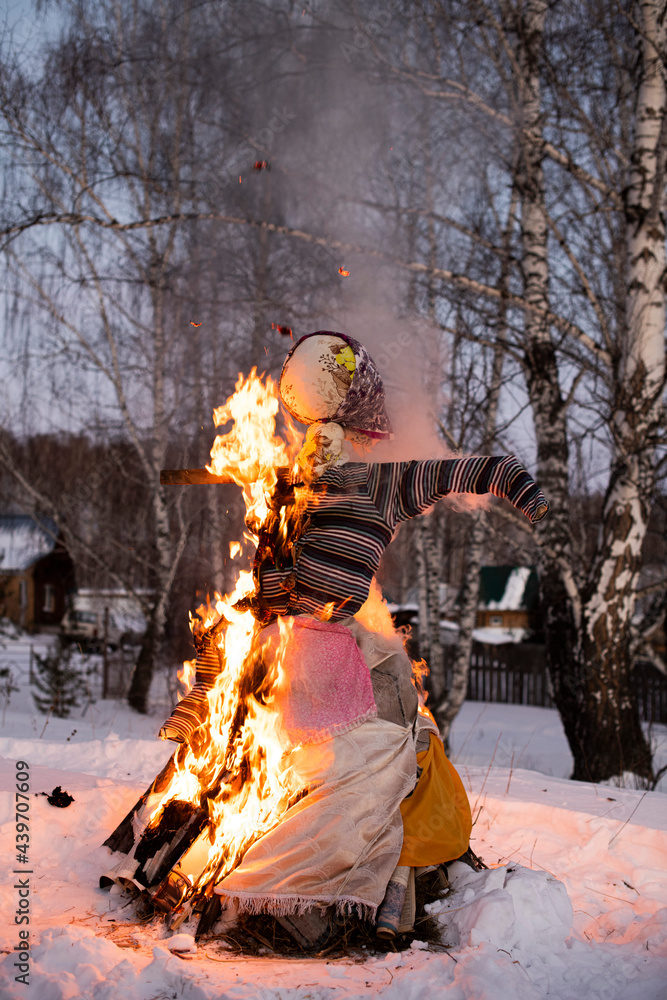Maslenitsa: The Ancient Festival of Spring and the Sun
- Велияра Светлица
- Feb 22
- 4 min read
Essence of the Celebration

Maslenitsa is one of the oldest Slavic holidays, with roots in pagan traditions. This festival is associated with bidding farewell to winter, welcoming spring, and honoring the sun. In ancient times, Maslenitsa symbolized renewal, nature’s awakening, and the beginning of a new life cycle. It is a time of joy, social gatherings, feasting, and rituals aimed at attracting good fortune and prosperity to the home.
Why is it called Maslenitsa?
The name of the festival comes from the tradition of consuming dairy products, especially butter, during the last week before Lent. During this period, meat was prohibited, but dairy products, eggs, and fish were allowed. Pancakes, fried in butter, became the main festive dish, giving the holiday its name. Additionally, pancakes, with their round shape, symbolized the sun, emphasizing the connectio
n between Maslenitsa, nature’s renewal, and the start of a new cycle of life.
When is Maslenitsa celebrated in Pagan Tradition?
In ancient times, Maslenitsa was celebrated around the time of the Spring Equinox when day and night are equal in length, and daylight starts increasing. This period typically falls between March 20-22. In the modern calendar, Maslenitsa is celebrated one week before Lent. However, for those who follow the ancient traditions, it is best observed during the equinox. In the Orthodox Christian tradition, Maslenitsa does not have a fixed date. This year, it will be celebrated from February 24 to March 2.
How to Celebrate Maslenitsa According to Slavic Traditions?

Maslenitsa celebrations include festive gatherings, the burning of the winter effigy, eating pancakes, games, circle dances, and rituals for cleansing and attracting happiness. It is a time to express gratitude to the sun for its warmth and light, forgive past grievances, invite prosperity into the home, and prepare for renewal.
Traditional festivities involved mass sleigh rides, building snow fortresses, and sledding down icy hills. Fistfights, folk fairs, performances by jesters, songs, and dances were common. Women baked pancakes and pies, treating guests to warm drinks and sweets.
Markets and fairs were set up in towns and villages, where people could buy handcrafted goods, taste traditional dishes, listen to folk music, and take part in various ceremonies.
In the past, there were also other traditions. For example, in Russia, there was a custom called "taking the snow town," where young people built a snow fortress and then stormed it, symbolizing the battle between winter and spring. Villages hosted "Maslenitsa swings"—it was believed that the higher a person swung, the more luck they would have in the new year. Young women also practiced fortune-telling for marriage, tossing shoes over a fence or looking at their reflection in a river hole.
What Should Not Be Done During Maslenitsa?
Although Maslenitsa is a time of joy, there are certain prohibitions that our ancestors observed:
Avoid quarrels and foul language. Maintaining peace in the family and with others during these days is important to prevent misfortune for the whole year.
Do not refuse food to others. Hospitality is a key principle of the holiday. Refusing to share pancakes or other treats was considered a bad omen.
Do not stay alone. Maslenitsa is a celebration of togetherness, and being alone during this time was believed to be unlucky.
Do not refuse to forgive. On Forgiveness Sunday, it is crucial to sincerely forgive past offenses and not hold grudges.
Avoid eating meat. Although Lent has not yet begun, people traditionally refrained from meat dishes during Maslenitsa, replacing them with dairy products, fish, and pancakes.
What to Do Each Day of Maslenitsa?
Monday – Welcoming Day. The beginning of the festival. The Maslenitsa effigy is made, the first festivities are held, and the first pancakes—symbols of the sun—are prepared.
Tuesday – Playtime. A day of fun and games. Young people go sleigh riding, participate in playful competitions, and arrange matchmaking activities.
Wednesday – Feast Day. Housewives treat their families and guests to pancakes, setting up abundant tables with various delicacies.
Thursday – Revelry. The peak of the festival. Large-scale festivities take place, including fistfights, circle dances, fire-jumping, and other cheerful rituals.
Friday – Mother-in-Law’s Evenings. Sons-in-law visit their mothers-in-law to show respect and enjoy their pancakes.
Saturday – Sisters-in-Law Gatherings. Young wives invite their husband’s relatives, give them gifts, and treat them to pancakes.
Sunday – Forgiveness Day. The final day of Maslenitsa, when people ask for forgiveness, burn the winter effigy, and bid farewell to the cold season.
A Couple of Pancake Recipes to Try for Maslenitsa
Classic Pancakes
Ingredients:
500 ml milk
3 eggs
200 g flour
2 tbsp sugar
A pinch of salt
2 tbsp vegetable oil
Preparation:
Beat the eggs with sugar and salt.
Gradually add the milk and flour, mixing to avoid lumps.
Add oil and let the batter rest for 20 minutes.
Fry on medium heat until golden brown.
2. Kefir Pancakes with Boiling Water
Ingredients:
500 ml kefir
320 g flour
250 ml boiling water
2 eggs
0.5 tsp salt
2 tbsp sugar
0.5 tsp baking soda
2 tbsp vegetable oil
Preparation:
Pour kefir into a bowl, add eggs, salt, and sugar, and whisk well.
Mix flour with baking soda and add it to the kefir mixture, stirring thoroughly.
Add 250 ml boiling water and quickly mix until smooth.
Add 2 tbsp vegetable oil and stir one last time.
Fry in a pan, enjoying the delicate lacy texture of the pancakes.
Enjoy the festivities and have a joyful Maslenitsa!



Comments